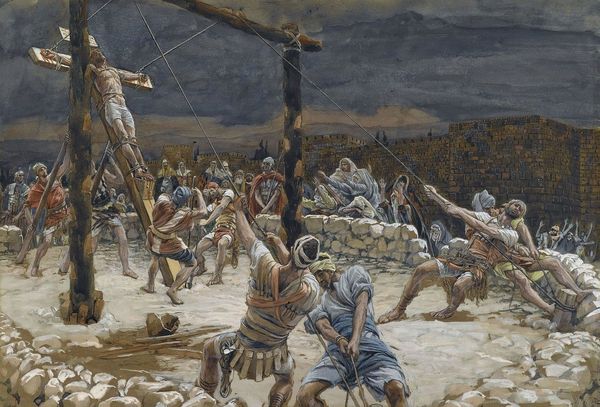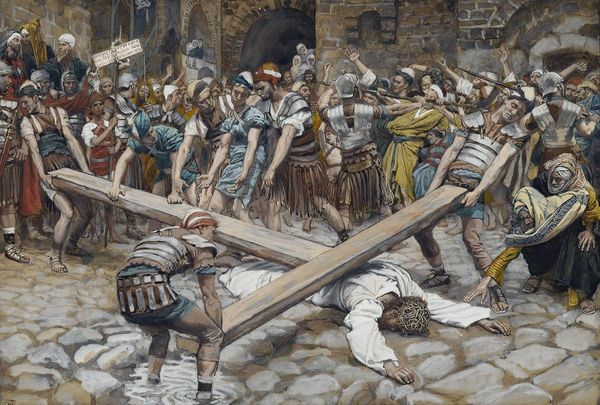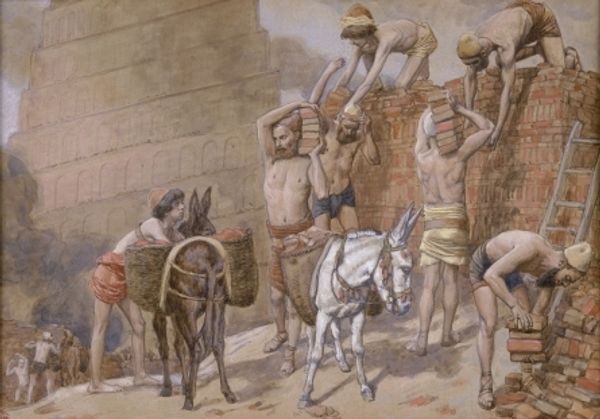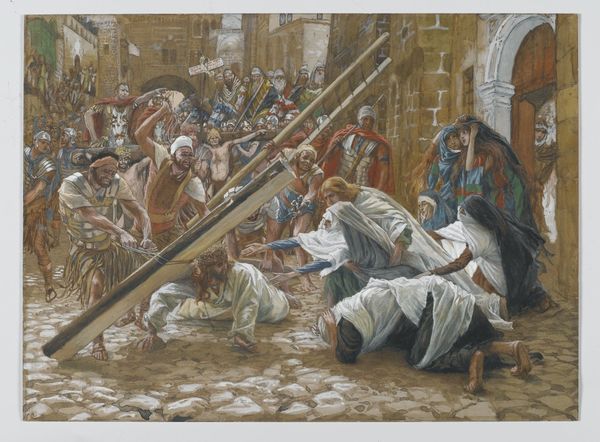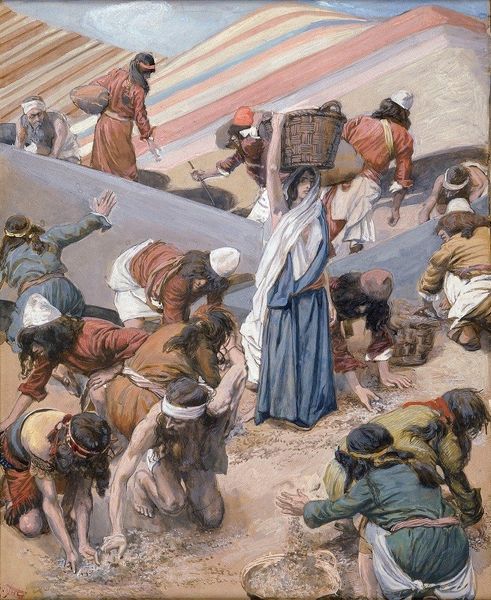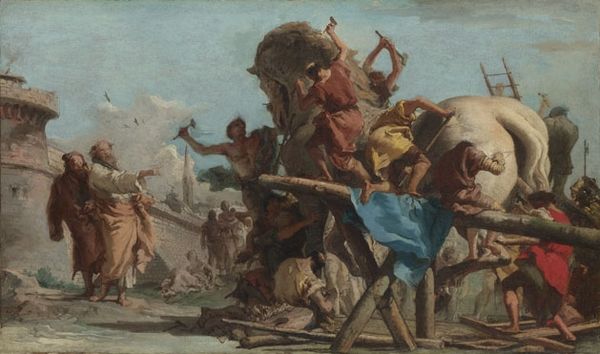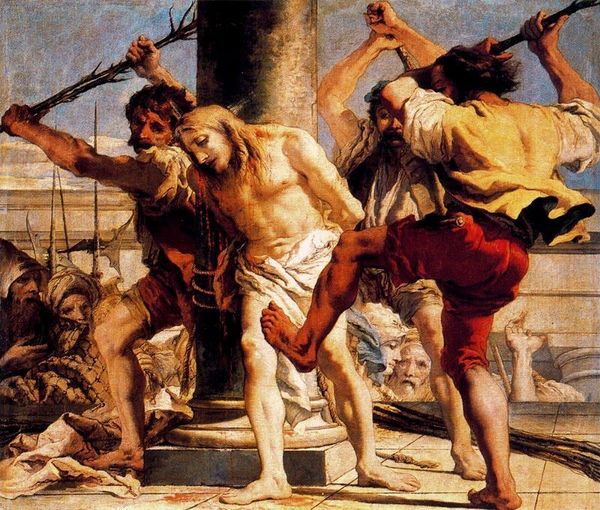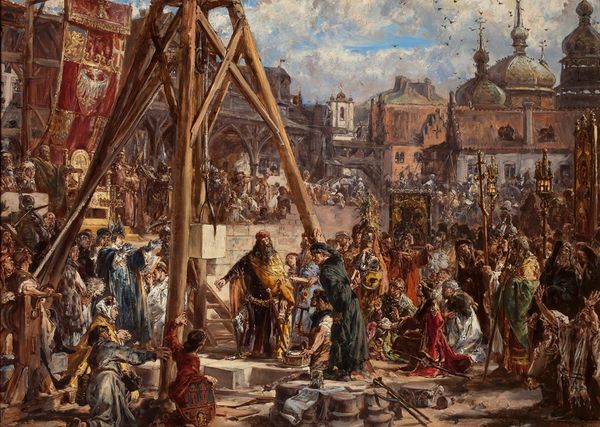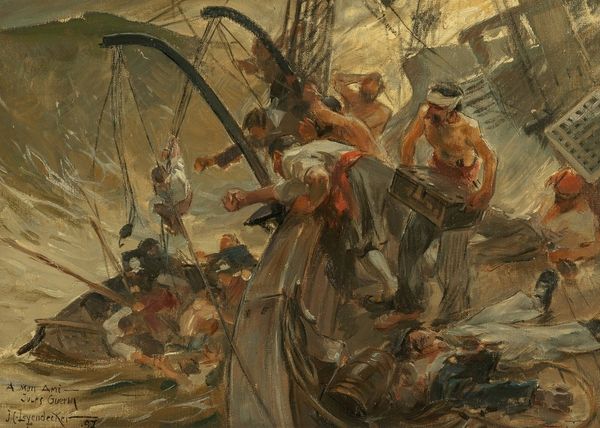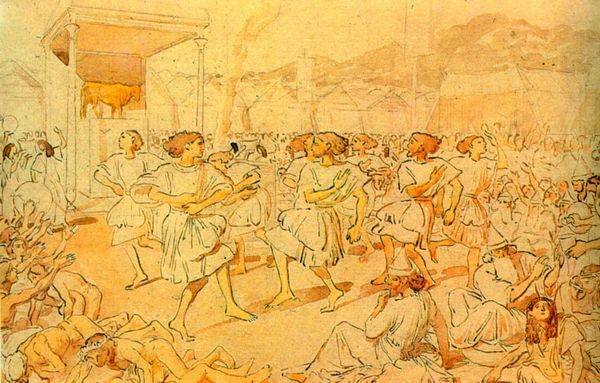
Dimensions: 21.5 x 28.8 cm
Copyright: Public domain
Editor: James Tissot's "Building the Ark," created in 1902 using oil paint, strikes me as a fascinating depiction. The men seem completely absorbed in their work, the timber looking almost like it stretches on forever. How would you interpret this painting? Curator: It’s interesting, isn’t it? Tissot was, let's be honest, a bit of a rebel with a brush. After success portraying French society, he devoted himself to illustrating the Bible. Imagine the raised eyebrows in the art world! What I see here, beyond the literal scene, is Tissot grappling with faith, really wrestling with the story’s magnitude. What does this “narrative-art” of working look like for you, considering Tissot´s focus? Editor: I see what you mean; the scale of the ark, mirrored by the effort in their faces, seems to suggest a collaboration with a higher power, so to speak. It's not just carpentry, it's destiny. Do you think that makes this work stand out, compared to others that depict biblical scenes? Curator: Absolutely. He grounds the divine in the mundane. These aren't idealized heroes, they’re workers, sweating and straining. There's a raw authenticity here, a human vulnerability that invites us in. I think he understood that faith isn’t always pretty or polished, sometimes it's hard work and blistered hands. What did you make of the realistic approach within this "academic art" style? Editor: That's beautifully put. I initially thought of it as academic because of its realism, but considering his previous social commentary, the painting has a distinct feel, one of tangible dedication rather than divine command. Thank you for sharing your perspective. It's altered the way I see Tissot's intention and this particular work. Curator: My pleasure. I find that if a work continues to raise such questions years later, it probably speaks for itself!
Comments
No comments
Be the first to comment and join the conversation on the ultimate creative platform.
